Oxides and hydroxides: Opal
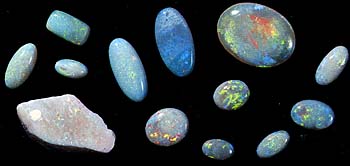 Diagnostic card.
Diagnostic card.
Si O 2 * n (H 2 O)
Singonia amorphous
Hardness 3-3,5
Specific weight 3.96
Cleavage perfect along the base
Crack irregular
Color is colorless, colored
Color in powder white
Glitter from glass to pearly
The name "opal" came from the Sanskrit "fallen" - "precious stone". There are three groups of opals: iridescent noble opals, fire opals and widespread common opals. In their physical properties, significant fluctuations are noted.
Noble opal. A feature of noble opals is opalization - an iridescent play of colors, changing with every turn of the stone. Even in the 60s of the XX century it was explained by the refraction of light on the thinnest plates. Electron microscopy with a 20-thousandth magnification allowed us to establish the true cause of this phenomenon: the smallest spheres ("globules") of low-temperature cristobalite, which are arranged in an orderly manner immersed in a gel-like mass of silica, opal create complex phenomena of light interference. Therefore, noble opal, strictly speaking, does not at all represent a truly amorphous mass.
 In the photo, a sample of fire opal from Mexico. Below: noble opal. Opal always contains water - from a few to 30%. Over time, the stone can lose it. At the same time, it becomes fissured and its opalization fades. When impregnating with oil, spermaceous or water, the cracks disappear, however, only for a while. Aging opals can be slowed down, and the color game can be strengthened if stored in moist cotton wool. When inserting opals into the frame, great care is needed, since the loss of water is possible even with mild heating. Opal is sensitive to pressure and shock, as well as to acids and alkalis.
In the photo, a sample of fire opal from Mexico. Below: noble opal. Opal always contains water - from a few to 30%. Over time, the stone can lose it. At the same time, it becomes fissured and its opalization fades. When impregnating with oil, spermaceous or water, the cracks disappear, however, only for a while. Aging opals can be slowed down, and the color game can be strengthened if stored in moist cotton wool. When inserting opals into the frame, great care is needed, since the loss of water is possible even with mild heating. Opal is sensitive to pressure and shock, as well as to acids and alkalis.
Among the noble opals there are white opals (with a white or light basic tone and rarer black opals, the main tone of which is dark gray, dark blue, dark green or grayish black.) Deep black color is extremely rare. Its "opaline") is a strip, patch or glitter of noble opal in the parent rock.Thanks to effective color contrasts, such stones are also used in jewelry.
Chemical composition. Very volatile. The water content varies from 1 to 21%, occasionally higher. Distinguish the following varieties: precious (noble) opal, distinguished by opalescence and the play of colors; Hydropool - strongly porous, transparent in water; Hyalit (glass opal), forming stalactites or globular secretions. Strong internal reflexes, opalescence. Transparency. Translucent, opaque. Shingonia. Amorphous (does not form crystals). Form of excretions. Kidney-like discharge, nodules.
Colloidal amorphous mineral (devoid of crystal structure). It occurs in the form of veins, globules and crusts of different colors; Sometimes has a striking rainbow play of light. Opal is also found in the form of dense amorphous masses or earthy clusters having a grayish-white color. In opal, hardness and specific gravity differ somewhat from quartz. The mineral is hard and light. It does not show cleavage, although it is very fragile.
Under the influence of air, opal loses water and acquires the smallest fracturing (this phenomenon is called "violent insanity"). Opal is usually transparent and has a greasy shine. On the basis of color and general appearance, a noble opal is distinguished. He has a gray, blue and black background and pearlescent shine, which is due to the characteristic internal rainbow effect. In fire opal, the shades can be from red to yellow.
Hydrophanes, he is hyalitis - gray-whitish. From opal is a rock geyserite, which occurs on the sides and in the immediate vicinity of geysers and is formed by depositing from boiling water.
 Diagnostic signs.
Diagnostic signs.
Under the influence of ultraviolet rays opal often glows yellow or green. It does not dissolve in any acids except fluoride. When heated, it loses water and decomposes, turning into quartz.
Origin.
Opal has a sedimentary origin.
It is formed by the precipitation of silica and the accumulation of the remains of skeletons of marine organisms.
Place of Birth.
Noble opal of various shades is delivered from Transylvania and the United States. The greatest application is found in black opal coming from Australia. Fire opal is mined in Mexico. In Italy the usual opal is found in Baldissero-Canaves, Turin Province. Geyserite is abundant around the geyser Island in New Zealand and in the Yellow Uston Park (USA).
Use in jewelry.
Both noble and fire opals are used as precious stones of great value. The curved surface is most suitable to reveal in full the brilliance and coloring that distinguish noble opal. The most common cut is a cabochon for brooches and earrings or a sphere for necklaces. Mexican fire opal is often faceted.
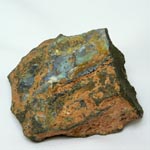
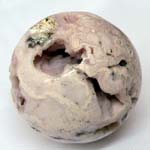
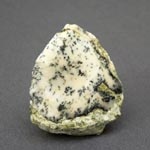
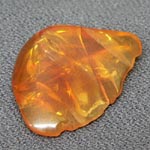
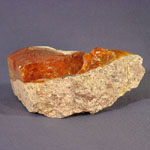
Until the beginning of the XX century. The best quality opals came from the Cervenica deposit in the extreme east of the Czech Republic. Then the Avtralian opals were discovered. The most famous of the deposits of New South Wales - Lightning Ridge and White Cliffs, in South Australia are Kubier-Pedi and Andamuk, Queensland - Bulla Creek and Burku River. Opals are usually found in the form of thin (1-2 mm) interlayers or small lens, usually in sandstones. In addition to Australia, deposits of noble opal are found in Brazil, Guatemala, Honduras. Japan and the USA (Nevada).
In Europe, some time ago there was a belief that opals bring misfortune. In the East, this stone has always been a symbol of hope and loyalty. The game of colors is revealed best when processing opal cabochon. In opal doublets, the so-called layered opals, ordinary opal or onyx is placed under the delicate noble opal. In triplets, a thin opal layer is covered, in addition, with a protective layer of rock crystal. In imitations and imitations, light opals or opaline matrix to emphasize the play of colors are painted black. Porous opals are impregnated with resins. In the 70 years of the XX century, a synthesis of noble opals was carried out.
Fire opal. Its name was a fire opal for a flame-orange color. Opalization of such opals is absent or is very weak. Often the stones are milky-cloudy. The best fire opals are transparent. The stone is sensitive to any influences. The most significant deposits are in Mexico (Hidalgo and Queretaro), as well as in Brazil, Guatemala, Honduras, USA, Turkey, CIS (Kazakhstan). On the market are also imitations made of opal glass.
Varieties of noble opal: dzhirazol, or sun stone, a transparent, almost colorless opal with a wavy bluish tint; Irisapal - a colorless or slightly brownish stone with a single-color tint (from Mexico).
Ordinary opal. Usually opaque, does not have an iridescent game of colors. Trade names are very numerous, for example: agate opal (agate with interlayers of opal), wood opal ("petrified tree"), honey opal, milk opal (translucent, white with light pearlescent, its opaque variety called porcelain opal); Prazopal, or chrysopal - opaque, apple-green stone; Waxy opal - yellowish-brown with a wax shine; Water opal, or hydrophan - "aged" noble opal, which has become turbid due to loss of water; Having absorbed water, temporarily becomes again translucent and opalizing.
Currently, 90-95% of the world's mining of noble opal falls on Australia. In the CIS, only small manifestations of it are known - in Kamchatka and in Ukraine. Soviet scientists also synthesized artificial opal with an ordered internal structure, which in its properties is virtually indistinguishable from the famous Australian noble opals.
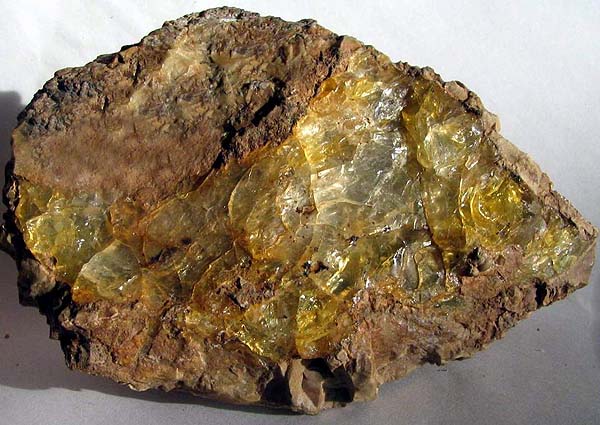
Opal in rhyolite. Sev. Primorye, Russia. Photo: © А.А. Evseev.
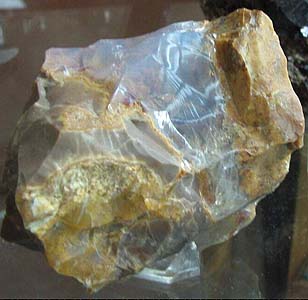

Opal. Oregon, USA. Opal (noble opal). Queensland, Australia. Photo: © А.А. Evseev.
- Ghetchellit - "New Almaden blend" - arsenide and antimony sulfide (modern sulfosol)
- Antimony is a toxic metal (semimetal) , widely used in metallurgy, medicine and engineering
- Zirconium - a rare and undiscovered metal and the most dangerous precious stone in oxide and salt
- Gold - yellow dangerous and poisonous metal of modern accurate digital and cable technologies
- Sulfur is a golden-yellow toxic substance and a sign of active volcanic activity
- Cadmium is an undisputed toxic silvery metal unknown to a wide range of people
- Lead - a poisonous gray imitator of metallic silver and toxic metal blende
- Arsenic is a classic poison of medieval and modern poisoners and medicine in medicine
Poisonous and radioactive dangerous stones and minerals
** - poisonous stones and minerals (mandatory check in the chemical laboratory + explicit indication of toxicity)
** - radioactive stones and minerals (mandatory check on the standard dosimeter + ban on open sales in case of radioactivity exceeding 24 milli / g / h + additional measures of population protection)
Catalog of minerals and semi-precious stones of the world by groups
** - poisonous stones and minerals
** - radioactive stones and minerals


Comments
When commenting on, remember that the content and tone of your message can hurt the feelings of real people, show respect and tolerance to your interlocutors even if you do not share their opinion, your behavior in the conditions of freedom of expression and anonymity provided by the Internet, changes Not only virtual, but also the real world. All comments are hidden from the index, spam is controlled.